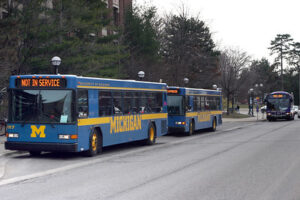On Monday, the Department of Education effectively suspended the Free Tuition Benefit program at Eastern Gateway Community College. EGCC is in Steubenville, OH and extends online coursework to AFSCME members free of charge. The Higher Learning Commission, which accredits EGCC, placed the school on probation last year because of program deficiencies.
According to EGCC president Michael Geoghegan, the Education Department order arrived out of the blue. Geoghegan said that the US Department of Education has not raised any objections to the program in the past. According to the US Department of Education’s letter, the agency is suspending the program because it appears that EGCC maximizes Pell Grants for Pell-eligible students and cancels tuition for Pell-ineligble students.
Since the beginning of the year, the EGCC program has encountered a series of setbacks. Following the HLC’s probation ruling late last year, the school has exchanged breach-of-contract lawsuits with its online program manager (OPM), the Student Resource Center. EGCC claims the Student Resource Center breached its contract with EGCC when it fired its CEO, Michael Perik, a close friend of Geoghegan’s.
The SRC sued EGCC, accusing the college of working directly with other unions to create new free tuition programs. That move would cut the SRC out of any proceeds of those contracts. Not to be outdone, Sterling Small Market Education Fund and SRC Holdings, which purchased the Student Resource Center last spring, sued Perik and other SRC officers, claiming that the executives failed to disclose that the Higher Learning Commission was auditing EGCC.
EGCC Free Tuition Benefits pays the bills
EGCC wants to get the matter cleared up quickly, so as not to affect the college’s fall enrollment. If it cannot, according to EGCC, the college may close for lack of operating funds. EGCC is a publicly funded community college, but the State of Ohio recently took steps to minimize state funding for its non-resident students. Non-resident students account for more than 95% of the school’s student body.
The stunning growth in enrollment caught the eye of accreditors at the Higher Learning Commission, which flagged the school for not having enough instructors to provide quality instruction.
EGCC offers a really good lesson for community college administrators who chase revenue for revenue’s sake. EGCC’s “natural” enrollment – that is, the number of in-district students EGCC serves – is painfully small – on the order of about 1,500 students. Through the Free Tuition Benefit Program, EGCC’s enrollment climbed to about 90,000. However, packing the school with out-of-district students isn’t currently serving the school well. Additionally, if EGCC cannot convince the Department of Education to lift its prohibition on the use of federal financial aid within days or weeks, EGCC could be one of the few public community colleges to fail.
Photo Credit: United States Department of Education (public domain), via Flickr





















